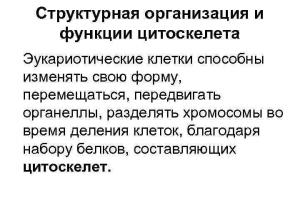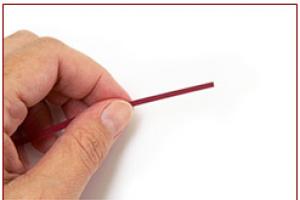Http://dacha-mania.ru/tsvetyi/
The main thing in caring for roses is feeding the roses. Feeding is necessary for normal development and abundant flowering roses. Then their buds will be large, and the bushes will be strong and healthy all season. The greatest effect comes from the combined use of organic and mineral rose nutrition.
Mineral fertilizers act faster, and organic fertilizers slower. Organics are especially useful. When applied, the plant not only receives nutrition, but organic matter improves the structure of the soil.
In the year of planting, roses do not need root feeding. Of course, this is provided that the pit was well filled when landing. But foliar feeding on leaves will be very useful. In the fall, it is worth feeding the planted plants with potassium so that the shoots ripen and the roses prepare for winter (potassium sulfate or potassium magnesium sulfate, 1 tablespoon per bucket of water).
First feeding of roses.
For the first time we feed the roses after they spring pruning, at the beginning of growth. As a rule, depending on the weather, this is the end of April, beginning of May. Feeding options may vary. There is also a large selection of special fertilizers for roses from different companies on sale. It's not difficult to choose.
We feed with nitrogen fertilizers, ammonium nitrate or urea (1 tablespoon per bucket of water).
We use old, inexpensive, proven fertilizers: azophosphate, superphosphate, potassium nitrate or potassium magnesium.
It is most effective and convenient to use complex fertilizers. In spring, for example, “Kemira” (spring) is suitable. Add it or in liquid form 1 tbsp. spoon per 10 liters of water or dry.
You can use the specialized mineral-organic fertilizer “Gloria for Roses” at this time. Second
Dry feeding of roses is possible only after abundant watering. Fertilizer cannot be poured into the center of the bush; you need to retreat 10-15 cm. Sprinkle it in the same amount around the bush, close it up and water it again.
For feeding, you can use Greenworld mineral fertilizer in granules or a special complete fertilizer for roses from Bayer. Her Toprose fertilizer contains nitrogen, potassium, magnesium and phosphorus. (It is enough for them to feed the roses twice a season. In the spring and after the first flowering, when the roses gain strength before the next one).
A week after fertilizing with mineral fertilizers, we add organic matter to the soil. This can be done in different ways.
Mulch the plant with rotted manure. We add half a bucket of rotted manure around the bush, loosen it and water it.
Cooking liquid fertilizer from fresh manure. We dilute 1 kg of manure in a bucket of water and let it sit for a couple of weeks. We dilute the resulting mixture in water in a ratio of 1:5 and water the plant.
You can even use banana peels as a top dressing by burying them in the ground near the bush.
The second feeding of roses during budding.
When the buds begin to set on the roses (in early June), we fertilize the roses again.
Potassium nitrate. The color of the roses will become brighter, the buds will bloom more slowly and last longer.
A solution of 100 g of superphosphate and 30 g of potassium sulfate per ten-liter bucket of water.
Immediately after this, we water the roses with fermented grass*, mullein infusion or chicken droppings, i.e. we add organic matter.
*Herbal infusion is best prepared from nettle, but can be made from any other herb. With chopped green mass, compacting it, fill the bucket two-thirds full. Add 100 g of superphosphate or urea and 1 glass of ash. Fill with water and place in the sun for a week to speed up fermentation. Then, dilute 1 liter of infusion in 10 liters of water and feed the plant.
A good effect is achieved by mulching the soil with rotted manure or compost with a layer of about 5 cm. Remember that the mulch should not touch the shoots. There should be free space around the bushes.
At this time, foliar feeding of roses with infusion of ash, mullein and microelements gives a good effect, double superphosphate and potassium nitrate (more details below).
The third feeding of roses before flowering.
Before flowering (in mid-June), it is necessary to fertilize the roses with one of the following compounds.
Potassium sulfate and magnesium sulfate or potassium-magnesium (1 tablespoon per 10 liter bucket of water). three
Potassium sulfate and fertilizer "Agricola Rose" 1 tbsp. spoon, 2 tbsp. spoons of nitrophoska per 10 liters of water. Under the bush 3 liters of solution.
Sodium humate (0.5 teaspoon per 40 liters of water) a couple of liters per bush.
Attention! Do not feed roses during flowering!
The fourth feeding of roses is the flowering field.
Roses need the next feeding when they have finished blooming and we cut off the faded heads. After the first wave of flowering, the plant needs fertilizer with a high content of phosphorus and potassium for further flowering, i.e. universal, mineral fertilizer. For example, “Kemira universal” (1 tablespoon per bucket of water).
Don't forget about organics. Water with a solution of mullein, chicken droppings or herbal infusion. Foliar feeding of roses is also useful.
Fifth feeding of roses.
At the end of July, we fertilize the roses with organic matter for the last time (see above).
After a couple of weeks, potassium-phosphorus fertilizers. So we feed the roses every 2-3 weeks until the end of August.
At the end of summer, we stop feeding the roses so as not to cause the appearance of new shoots. After all, they may not have time to ripen before winter and overwinter well and will only weaken the rose.
The sixth and last feeding of roses.
At the beginning of September we feed the plants with mineral fertilizers for the last time.
We use potassium magnesium for this.
Complete complex fertilizer. We dilute a couple of tablespoons in 10 liters of water, pour half a bucket under the bush.
A few tips.
During unfavorable conditions for the rose (cold temperatures, drought, pruning, replanting), the rose will be helped to recover by spraying with the drug "Epin" (1 ampoule per 5 liters of water).
We apply fertilizer only to damp soil. After fertilizing, the soil should be watered again.
When feeding roses, you must maintain a sense of proportion. Increased nitrogen content causes rapid growth of the plant. The rose begins to fatten, its flowering is delayed. If you overfeed the plant with potassium, the rose will bloom later, and the underdeveloped buds will rot. It is better not to feed a rose than to overfeed it.
Do not change fertilizers frequently.
Do not use potassium chloride to feed roses. The chlorine contained in it has a depressing effect on the development of roses.
Never use pig manure.
If your roses are growing well and blooming profusely, the soil is rich in nutrients. This means that when growing roses you can only get by with organic fertilizers. The soil will not become salty and will not be destroyed earthworms and beneficial microorganisms. It is quite possible to get by with foliar feeding.
Foliar feeding of roses.
Very effective for roses is foliar feeding through the leaves. We do this by spraying rose bushes with specially prepared solutions. In this form, the microelements contained in them are absorbed by the plant most quickly.
To avoid burning the leaves, in hot weather we spray the plants in the morning or, even better, in the evening. In cloudy but dry weather, spray during the day. The leaves must be dry before processing; they must be moistened on both sides. The solution must be fresh.
Foliar feeding can be done only when the leaves of the plant are healthy and not affected by disease or pests.
Dissolve nitrogen and potassium fertilizers by thoroughly mixing cold water before spraying. Superphosphate must be infused for 24 hours.
There are many ways to feed roses every 10 days in the spring before flowering and in the summer after it. We do not apply foliar fertilizing during rose flowering! Below are the feeding options.
Take care of your pets and enjoy the beauty and aroma of blooming roses!
In addition to organic fertilizers for roses, such as compost, humus, and rotted leaves, plants also need mineral fertilizers. They contain substances that are indispensable for planting, ensuring intensive growth, development of the root system and affecting general health bushes Titles the best fertilizers for roses, as well as information about their use, you will find below.
Mineral fertilizers for roses: intensive growth and development of roots
Roses have a good “appetite”. Mineral and organic fertilizers for roses are necessary for their optimal growth and development.
Mineral fertilizers must contain: nitrogen, phosphorus, potassium and magnesium.
Nitrogen. Nitrogen stimulates the growth of new powerful shoots with beautiful dark green foliage, so it is applied at the beginning of the season. In the fall, roses are not fed with nitrogen, otherwise the young tender shoots that have grown by winter will die at the first frost. It is best to apply nitrogen fertilizers immediately after pruning roses, that is, in April - May. If necessary, fertilizing with nitrogen can be repeated after the end of the first wave of flowering.
Nitrogen is intensively consumed during the growth of shoots and leaves. Its deficiency causes yellowing, shredding, and sometimes the appearance of brown spots. Sparse flowering and premature leaf fall will complete the signs of nitrogen starvation. And with an excess of nitrogen, vigorous growth of shoots with elongated internodes occurs.
Phosphorus. Plants need phosphorus for the development of new roots, the formation of buds and flowers. Considering that superphosphate acts slowly, for it maximum effect It is better to add it to the soil when planting roses.
Phosphorus is consumed throughout the growing season. Its deficiency delays flowering, and its excess ages the plants.
Potassium. Potassium plays a big role in the health of roses. Its deficiency reduces plant resistance. This element is applied under roses in the form of potassium sulfate in early July. When it comes to potassium fertilizers for roses, choose fertilizers containing magnesium, another important element for roses (potassium magnesium or potassium magnesium). Yellow leaves with green veins - a sign of magnesium deficiency.
Fertilizing with mineral fertilizers for roses must be alternated with fertilizing with organic matter.
Organic fertilizers for roses do not contain mineral salts. They consist of rotted animal waste or plant origin. The effect of such fertilizers is based not only on supplying plants with nutrients, but also on activating biological processes in the soil and thereby enriching it with humus. Organic fertilizers must first interact with soil microorganisms and be brought into a form that can be better absorbed by plants. Therefore, unlike mineral fertilizers, which are usually absorbed very quickly, organic fertilizers require time to be absorbed.
Organic fertilizer for roses: a source of nutrients
Organic fertilizers are applied in larger quantities than mineral fertilizers (up to one bucket per bush). But this source of nutrients lasts longer.
A good organic fertilizer is not only humus, but also rotted and leaf soil from old forest belts, where they are removed for fertilizer. upper layer soil up to 10 - 15 cm thick. This layer is light and very nutritious, it consists of perennial leaf litter.
During the summer, roses need foliar feeding with solutions of mineral fertilizers (Kemira Lux, Mortar, Aquarin, Potassium Humate and other water-soluble compounds in turn).
Such fertilizers contain nitrogen, phosphorus, potassium, magnesium and microelements: boron, copper, iron, manganese, molybdenum, zinc, etc. These substances not only provide good growth and development of roses, but also increase their resistance to diseases and damage.
Foliar feeding by spraying is carried out in the morning after the dew has dried or in the evening with a solution at a concentration of 1 g per 1 liter of water.
Special fertilizers for roses with names
 How to feed roses to ensure their intensive growth?
How to feed roses to ensure their intensive growth?
"Fertile Lake"- liquid complex organomineral fertilizer for roses, containing nitrogen - 1.5%, phosphorus - 1.8%, potassium - 2.3%, humate - 0.15%, microelements: magnesium, copper, sulfur, iron, boron, manganese , molybdenum.
This fertilizer is specially designed to feed everyone. A set of nutritional elements ensures full development, abundant flowering, high decorativeness of flowers, and the presence of humate contributes to the most complete absorption of nutrients by the plant.
To use, dilute 10 ml (2 teaspoons) of fertilizer in 1 liter of water or 100 ml in 10 liters of water. The consumption rates of the working solution are generally accepted and depend on the type and size of the vegetative mass of plants.
Garden flowers are fed with this special fertilizer for roses once every 2 weeks from early spring to the end of August. If the soil was fertilized in the fall, then in early spring fertilizing may not be carried out.
Indoor roses in the spring-summer period are fed once every 10-15 days, during the period of budding and flowering - once every 7-10 days, during the period of relative rest - once a month.
Proper foliar feeding of roses is carried out with a working solution consumption rate of 250 ml to 500 ml and depends on the size of the vegetative mass. A combination of both types of fertilizers is effective. The day before or after fertilizing, plants should be watered. clean water.
Remember! Transplanted plants are fed no earlier than after 2 weeks.
How else to fertilize roses in the garden and on the windowsill?
"Agricola-Aqua"- concentrated liquid complex fertilizer, contains nitrogen - 4%, phosphorus - 5%, cadium - 6%, sodium humate - 0.8%, as well as microelements: boron, copper, zinc, manganese, iron, molybdenum. All macro- and microelements, humic acids are present in balanced quantities.
The fertilizer is intended for feeding various types indoor and garden roses. Stimulates active plant growth, flowering, and gives flowers a bright color.
For root feeding, 5 ml of the drug is dissolved with stirring in 1 liter of water and the plants are watered with this solution. Feeding is repeated after 7-10 days.
For foliar feeding, 5 ml of the drug is dissolved in 2 liters of water and the plants are sprayed with this solution. This feeding is repeated after 10-14 days.
What fertilizers to feed roses: “Pokon” and “Gloria”
 What fertilizer should I feed roses growing in open and closed ground?
What fertilizer should I feed roses growing in open and closed ground?
"Pokon"- highly effective fertilizer for roses of all types: simple, bush and climbing, planted in pots, in open ground, as well as in vases or containers. Promotes rapid and long-term (within 2 weeks) supply of nutrients.
Guaranteed composition: nitrogen - 6% (2.6% in nitrate form, 2.1% in ammonia form and 2.7% in urea form), phosphoric acid- 5%, potassium oxide - 5%, trace elements: boron - 0.02%, copper - 0.004%, iron - 0.04%, manganese - 0.02%, molybdenum - 0.002%, zinc - 0.004%; All nutrients are soluble in water.
Before use, tilt the bottle upside down and return to its original position. Open the lid, tilt the bottle again and dissolve the solution measured with a dispenser (about 10 ml) in a little 1/2 liter warm water. Feed the plants regularly: 2 times a month during the period of growth and flowering. During dormancy, water indoor roses with a fertilizer solution once a month.
"Gloria"- fertilizer for and contains a balanced composition of nutrients and microelements that are easily absorbed by plants. Regular use of fertilizers stimulates the growth of leaves and stems, an increase in the number and size of flowers, and the development of the root system accelerates the onset of flowering and its duration. For the prevention of rose diseases, foliar feeding is most effective.
Before feeding the roots of the plant, it is necessary to water it with clean water. Then dissolve 2 caps of fertilizer (13 ml) in 1 liter of warm water and water the plants in the usual way.
When using the foliar method, fertilize in the morning or evening, while avoiding direct sunlight on the leaves to avoid burns. Dilute 2 caps (13 ml) in 1 liter of warm water and moisten the plant evenly with the resulting solution using a sprayer.
Fertilize roses as the phases of growth and development change (plant growth, beginning of flowering, etc.).
Transplanted plants are fertilized no earlier than 2 weeks after transplantation.
Frequency of feeding plants in the room: in spring - 2 times a month, in winter - 1 time in 2 months, in summer - 4 times a month, in autumn - 1 time per month.
The best way to feed roses: phosphorus fertilizer from the “Garden of Miracles” series
What is the best way to feed roses to quickly root cuttings?
"Rose"- phosphorus fertilizer for roses based on “Viohumus” from the “Garden of Miracles” series. Has a full set of essential nutrients, g/l, not less than: nitrogen - 5.0; phosphorus - 5.0; potassium - 5.0; humic substances - 1.0, as well as macroelements.
When using fertilizer for indoor plants(root feeding) 2 caps (8 - 10 ml) are taken per 1 liter of water and from March to September the plants are watered with a fertilizer solution once every 10-15 days, from October to February - once every 3-4 weeks. IN open ground 10 liters of solution per 5 -7 m2 of planting.
For foliar (leaf) feeding, soaking seeds, and rooting cuttings, take 1 cap (4-5 ml) per liter of water. Seeds and cuttings are soaked for 24 hours. The cuttings are installed vertically in the solution.
Alternate fertilizing with mineral fertilizers and organic fertilizers. Good results gives watering of roses in the garden and greenhouse with mullein infusion.
For 100 liters of water, take a bucket of fresh (no more than a day’s worth) mullein, stir and let the mixture brew and ferment for 5-10 days (the duration of the fermentation period depends on the ambient temperature). When the appearance of bubbles stops, the fermented strong infusion is diluted with water at the rate of 1 liter of infusion per 10 liters of irrigation water.
Before applying liquid fertilizer, water the soil well with clean water - approximately 10 liters per 1 m2. After this, liquid fertilizer is evenly poured around the bush. When it is absorbed, the soil is loosened and mulched.
Proper feeding of roses with nitrogen-potassium fertilizer
 "Ambulance for Roses"- special soil and fertilizer for roses and other flower plants. Made on the basis of natural components: peat, humus, natural structuring, deoxidizing and fertilizing materials.
"Ambulance for Roses"- special soil and fertilizer for roses and other flower plants. Made on the basis of natural components: peat, humus, natural structuring, deoxidizing and fertilizing materials.
This nitrogen-potassium fertilizer for roses contains a complete balanced set of nutrients, microelements and growth stimulants, as well as nitrogen - 150 mg, phosphorus - 150 mg and potassium - 500 mg per 1 liter of soil, slightly acidic pH - 5.5-6 ,5.
The soil is completely ready for growing, replanting and fertilizing.
Properties:
- Creates favorable comfortable conditions plant growth, promotes their survival after planting and replanting.
- Provides plant resistance to stress and disease, increases their immunity, eliminates the negative consequences of exposure of plants to low-quality soil mixtures, fertilizers, protective equipment, etc.
- When feeding roses with nitrogen-potassium fertilizers, they improve decorative properties plants, the roots are reliably protected from drying out and waterlogging.
- Suppresses the development of harmful and promotes the vital activity of beneficial soil microflora.
Application rate as a top dressing: 1-2 teaspoons for each liter of container with a plant. It is distributed evenly over the soil surface and carefully loosened, then watered. The frequency of fertilizing is 1-2 times a month, depending on the condition of the plant.
One of the most important conditions for quick flower propagation – high quality of seedlings you have chosen for planting, because a healthy rose requires much less maintenance . So pay attention to the shoots and root system, which should be clean and free of damage. Flower seedlings can be sold in various forms:
- Plants with a ball of earth that are packed in thick paper, in this case, the plant along with the paper is immediately planted in the ground - the packaging will “melt” by itself;
- Seedlings with “bare” roots are also good, which will allow you to immediately see their condition.
- Flowers are planted in a container even in the fall, only avoiding planting in the winter cold.
After winter, it is very important to promptly remove the shelter that we left in order to protect the flowers from frost. There is no rush to fully open the bushes, but delays in this matter can lead to problems. So, by opening roses too early, you can expose them to severe stress, because fragile ones will easily suffer from frost, and it is very difficult to restore them. And if you open them too late, the bark on the bushes will high temperature and dampness.
Therefore, professional gardeners recommend opening flowers when the average daily temperature exceeds +10 °C. The stems do not need to be trimmed right away; it is better to wait a couple of weeks until the rose sprouts shoots from the buds. Thanks to this, you will be able to see which of the buds died without surviving the winter, and which remained healthy. After pruning, we loosen the soil with a hoe so that air can flow to the root system, but there is no need to water the plant yet - after winter there is already enough moisture.
To combat it, it is best to use drugs Prestige or Medvetox, which are dug into the soil to a depth of 5 cm around the flowers. Roseate aphids are also dangerous, eating the tips of new shoots, which leads to a general weakening of the plant. The best way to combat it is to use soap solution if the damage from aphids is minor, an insecticide also helps Aktellik(20 drops of the mixture are diluted in a liter of water).
Helps a lot (as preventative measure) and a hot shower, which we will use to water the rose bushes, the main thing is that the water temperature does not exceed +65 °C, otherwise we will simply burn the plants.
In order for roses to be beautiful and healthy, they need various nutritional elements. At the same time, you must introduce them in a balanced manner and in right time- this is the only way to achieve it desired effect. Most often, organic matter is used for this, including manure and compost. Fertilizers in spring and summer also include the use of mineral fertilizers that affect their rapid growth.

Typically, fertilizers for roses are placed in a hole or trench for planting in the spring. But over time, the soil is depleted, microelements are washed out with watering, so plants require periodic feeding. The most effective is simultaneous fertilizing with several types of fertilizers, the quantitative composition of which is selected based on the structure of the soil, climatic conditions and the condition of the plants.
Gardeners divide all fertilizers into the following types:
- organic;
- mineral;
- foliar.
To provide good conditions For the development of rose bushes not only in spring and autumn, it is recommended to apply organic and mineral fertilizers together. Organic matter decomposes slowly, but improves soil structure. Minerals serve as quick nutrition for plants and organic microorganisms, but an excess of mineral fertilizers contributes to soil petrification and the formation of salts, which inhibits the development of the root system.
Organic fertilizers for roses
To feed roses, you can use everything except fresh manure. Fresh manure can burn plant roots, so it is advisable to use it at the stage of complete rotting or half-life. To add peat or vegetable compost to the bush, infusions are used to add nutrients with water:
- chicken infusion - obtained by diluting chicken droppings with water in a ratio of 1:20 if the droppings are fresh and 1:10 if the droppings are old. Leave in the shade for 5 days, dilute for irrigation with water 1:3;
- cow infusion - prepared similarly in a ratio of 1:10 from cow manure, infused for 5-7 days, diluted for irrigation 1:2;
- green fertilizer is used if there is no manure or droppings, it is obtained from a mixture of weeds before insemination, the leaves and stems of which are finely chopped into pieces, compacted in a plastic container and filled with water. After 10 days of fermentation, the finished infusion is diluted with water 1:10 for irrigation.
To increase the nutritional value of organic solutions, wood ash and superphosphate are added, based on the conditions of use, 1000 g or 500 g, respectively, per 50 liters of water.
Mineral fertilizers for roses
Mineral fertilizers include chemicals that have a beneficial effect on the growth and development of all plant systems:
- nitrogen - ammonium nitrate - are necessary for the active growth of shoots and foliage. An excess of nitrogen leads to a delay in flowering and a decrease in the number of inflorescences;
- phosphorus - , double superphosphate, ammophos - ensure vigorous flowering and ripening of young shoots in the fall before the onset of persistent frosts;
- potassium - potassium chloride, potassium sulfate, potassium magnesia, potassium sulfate - increase the frost resistance of bushes, improve the color of flowers, stimulate the movement of juices from one plant system to another, help roses retain moisture in the stems and leaves.
It is considered the most universal, which combines the properties of phosphate and potassium fertilizers.
Foliar feeding of roses
Foliar feeding or foliar feeding can be carried out in autumn, summer and spring using both organic and mineral fertilizers. But when foliar feeding, solutions and infusions should be diluted with water twice as much as when watering at the root. Organic infusions (chicken, cow and herbal) must be filtered to prevent small particles from getting on the leaves and clogging the sprayer.
- urea 30g per 10l of water;
- sodium humate - dissolve 10g in 3l of water and then dilute 20 times;
- superphosphate – 50g per 1l hot water, after complete dissolution, diluted in 10 liters of water;
- – 500 ml is poured into a liter of water, after infusion, diluted in 10 liters of water and filtered.
Foliar feeding is carried out in warm, dry weather with freshly prepared solutions. In the evening, drops of the nutrient solution remain on the leaves for a long time, but heavy dew can interfere with the whole process. Foliar fertilizing does not affect the soil structure and is quickly absorbed by plants.
Fully soluble industrial fertilizers for roses have appeared on sale, which contain a full range of microelements.
Fertilizing roses in spring
In the spring, roses are treated as early as possible, before the active growth of buds and shoots begins, when the ambient temperature becomes positive. Fertilization in spring is carried out in several ways:
- digging in organic fertilizers around the rose bush - 0.5 buckets of rotted manure;
- applying mineral fertilizers using the dry method (applied only to moist soil followed by watering) 1 tablespoon of ammonium nitrate or urea is scattered under the bush;
- mulching with organic matter (rotted manure or garden compost) – fertilizes plants and protects the soil from drying out.
Urban flower growers can use ready-made complex fertilizers for roses, which are offered in sufficient quantities by the retail chain. Before flowering, the amount of potassium and phosphorus is reduced and the dose is increased, which are applied in aqueous solutions with watering or per leaf.
There is no point in fertilizing young rose bushes planted last spring with organic matter, since a sufficient amount of it was added to the planting holes.
How to fertilize roses in the fall?
Abundant flowering inevitably leads to weakening of the bush, so in the fall it is necessary to subzero temperatures make up for the loss of nutrients with proper feeding so that the plant remains strong for the winter with good immunity:
- watering accelerates the ripening of shoots in the fall and stops their growth - 25 g of superphosphate and 10 g of potassium sulfate are taken per 10 liters of water;
- from September, exclude nitrogen fertilizing, which contributes to an increase in leaf mass and the growth of young shoots;
- In the fall, with the onset of frost, you can sprinkle the ground under the rose bushes with rotted manure, mulch or mature compost, then in the spring the first fertilizing can be done later.
Mineral fertilizers for roses are applied under the bush in the fall in the form of a solution or leaf by leaf. If autumn is rainy, watering should be stopped and granular water should be scattered under the bushes. Excess water pushes the plant to actively grow shoots, which is completely undesirable for the winter.
Fertilizing indoor roses
All roses are fertilized according to the same scheme, but indoor roses require increased nutrition, since the volume of nutrient soil is limited by size flower pot. It is recommended to start fertilizing the plant a month after transplanting into new soil and fertilize every two weeks using complex mineral fertilizer. Many people take indoor roses to the balcony or garden in the spring, then they need care. You have to water frequently, as the soil in the pots dries out faster. In the fall, having introduced for the winter, it is necessary to provide the plant with optimal temperature air 12-15 o C. Stop fertilizing and reduce watering to once every two weeks. Then, with the arrival of spring, the rose will please active growth and abundant flowering.
How to fertilize Chinese rose?
Chinese rose (hibiscus) is very popular among lovers of indoor floriculture, since caring for it is simple and not burdensome as for any indoor rose. To get a luxurious crown and bright flowers, you need to provide proper care and effective nutrition plant. Chinese rose it is necessary to feed, alternating organic fertilizers with minerals, once a week during the entire period of active growing season and flowering. The best option is the use of ready-made complex water-soluble compositions for flowering ornamental plants. When fertilizing Chinese, it is necessary to give preference to mixtures that contain iron and copper chelate, which are necessary for full development and abundant flowering.
Signs of Rose Nutrition Deficiency
An experienced florist can always determine by appearance roses, what microelements or chemical substances she doesn’t have enough for normal growth and choose the appropriate ones. There are several external signs:
- if the leaves turn yellow, the shoots turn pale and the plant loses leaf mass, this is a sign of nitrogen starvation. You can use a urea solution with watering under a bush or over a leaf, the result will be noticeable in two days;
- if the leaves turn brown along the edge of the plate and dry out, this indicates a lack of potassium, you can use a potassium magnesium solution or infusion wood ash for watering;
- if the leaf blade turns yellow between the veins, which remain green, this is a lack of iron or manganese, foliar feeding should be done by spraying with a solution containing manganese or iron chelate.
Excess nutrients and excessive fertilization lead to the appearance of white spots on the leaves and inhibit the growth of the bush.
So don't get too carried away chemical solutions. In order for roses to grow strong and delight with abundant flowering, you need to choose resistant varieties, correctly determine the growing location, and adhere to the rules of planting, watering and fertilizing.
The main thing in caring for roses is feeding the roses. Feeding is necessary for the normal development and abundant flowering of roses. Then their buds will be large, and the bushes will be strong and healthy all season. The greatest effect comes from the combined use of organic and mineral rose nutrition.
Mineral fertilizers act faster, and organic fertilizers slower. Organics are especially useful. When applied, the plant not only receives nutrition, but organic matter improves the structure of the soil.
In the year of planting, roses do not need root feeding. Of course, this is provided that the pit was well filled when landing. But foliar feeding on leaves will be very useful. In the fall, it is worth feeding the planted plants with potassium so that the shoots ripen and the roses prepare for winter (potassium sulfate or potassium magnesium sulfate, 1 tablespoon per bucket of water).

Complex fertilizers for feeding roses
First feeding of roses.
We feed roses for the first time after their spring pruning, at the beginning of growth. As a rule, depending on the weather, this is the end of April, beginning of May. Feeding options may vary. There is also a large selection of special fertilizers for roses from different companies on sale. It's not difficult to choose.

- Dry feeding of roses is possible only after abundant watering. Fertilizer cannot be poured into the center of the bush; you need to retreat 10-15 cm. Sprinkle it in the same amount around the bush, close it up and water it again.
- For feeding, you can use Greenworld mineral fertilizer in granules or a special complete fertilizer for roses from Bayer. Her Toprose fertilizer contains nitrogen, potassium, magnesium and phosphorus. (It is enough for them to feed the roses twice a season. In the spring and after the first flowering, when the roses gain strength before the next one).
A week after fertilizing with mineral fertilizers, we add organic matter to the soil. This can be done in different ways.
- Mulch the plant with rotted manure. We add half a bucket of rotted manure around the bush, loosen it and water it.
- We prepare liquid fertilizer from fresh manure. We dilute 1 kg of manure in a bucket of water and let it sit for a couple of weeks. We dilute the resulting mixture in water in a ratio of 1:5 and water the plant.
- You can even use banana peels as a top dressing by burying them in the ground near the bush.
The second feeding of roses during budding.
When the buds begin to set on the roses (in early June), we fertilize the roses again.
- Potassium nitrate. The color of the roses will become brighter, the buds will bloom more slowly and last longer.
- A solution of 100 g of superphosphate and 30 g of potassium sulfate per ten-liter bucket of water.
Immediately after this, we water the roses with fermented grass*, mullein infusion or chicken droppings, i.e. we add organic matter.
*Herbal infusion is best prepared from nettle, but can be made from any other herb. With chopped green mass, compacting it, fill the bucket two-thirds full. Add 100 g of superphosphate or urea and 1 glass of ash. Fill with water and place in the sun for a week to speed up fermentation. Then, dilute 1 liter of infusion in 10 liters of water and feed the plant.
A good effect is achieved by mulching the soil with rotted manure or compost with a layer of about 5 cm. Remember that the mulch should not touch the shoots. There should be free space around the bushes.
At this time, foliar feeding of roses with infusion of ash, mullein and microelements, double superphosphate and potassium nitrate (more details below) gives a good effect.
The third feeding of roses before flowering.
Before flowering (in mid-June), it is necessary to fertilize the roses with one of the following compounds.

Attention! Do not feed roses during flowering!
The fourth feeding of roses is the flowering field.
Roses need the next feeding when they have finished blooming and we cut off the faded heads. After the first wave of flowering, the plant needs fertilizer with a high content of phosphorus and potassium for further flowering, i.e. universal, mineral fertilizer. For example, “Kemira universal” (1 tablespoon per bucket of water).
Don't forget about organics. Water with a solution of mullein, chicken droppings or herbal infusion. Foliar feeding of roses is also useful.
Fifth feeding of roses.
At the end of July we fertilize the roses for the last time. organics (see above).
After a couple of weeks, potassium-phosphorus fertilizers. So we feed the roses every 2-3 weeks until the end of August.
At the end of summer, we stop feeding the roses so as not to cause the appearance of new shoots. After all, they may not have time to ripen before winter and overwinter well and will only weaken the rose.
The sixth and last feeding of roses.
At the beginning of September we feed the plants with mineral fertilizers for the last time.
- We use potassium magnesium for this.
- Complete complex fertilizer. We dilute a couple of tablespoons in 10 liters of water, pour half a bucket under the bush.
During unfavorable conditions for the rose (cold temperatures, drought, pruning, replanting), the rose will be helped to recover by spraying with the drug "Epin" (1 ampoule per 5 liters of water).
We apply fertilizer only to damp soil. After fertilizing, the soil should be watered again.
When feeding roses, you must maintain a sense of proportion. Increased nitrogen content causes rapid growth of the plant. The rose begins to fatten, its flowering is delayed. If you overfeed the plant with potassium, the rose will bloom later, and the underdeveloped buds will rot. It is better not to feed a rose than to overfeed it.
Do not change fertilizers frequently.
Do not use potassium chloride to feed roses. The chlorine contained in it has a depressing effect on the development of roses.
Never use pig manure.
If your roses are growing well and blooming profusely, the soil is rich in nutrients. This means that when growing roses you can only get by with organic fertilizers. The soil will not become salty, and earthworms and beneficial microorganisms will not be destroyed. It is quite possible to get by with foliar feeding.
Foliar feeding of roses.
Very effective for roses is foliar feeding through the leaves. We do this by spraying rose bushes with specially prepared solutions. In this form, the microelements contained in them are absorbed by the plant most quickly.
To avoid burning the leaves, in hot weather we spray the plants in the morning or, even better, in the evening. In cloudy but dry weather, spray during the day. The leaves must be dry before processing; they must be moistened on both sides. The solution must be fresh.
Foliar feeding can be done only when the leaves of the plant are healthy and not affected by disease or pests.
We dissolve nitrogen and potassium fertilizers by thoroughly mixing them in cold water before spraying. Superphosphate must be infused for 24 hours.
There are many ways to feed roses every 10 days in the spring before flowering and in the summer after it. We do not apply foliar fertilizing during rose flowering! Below are the feeding options.
But as they say, it's better to see once...
Take care of your pets and enjoy the beauty and aroma of blooming roses!
There are no similar entries.








